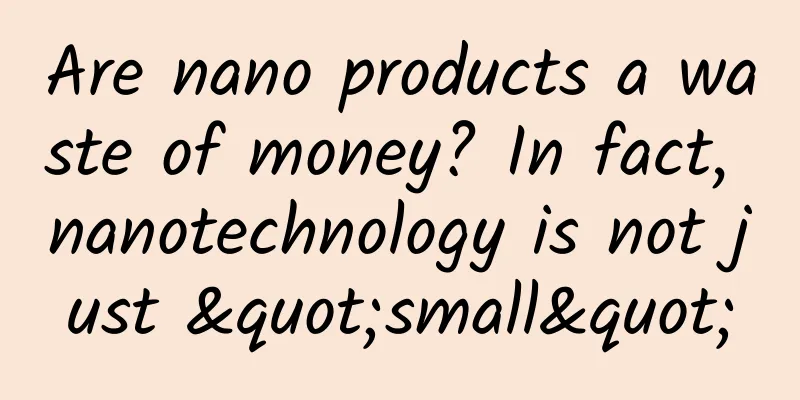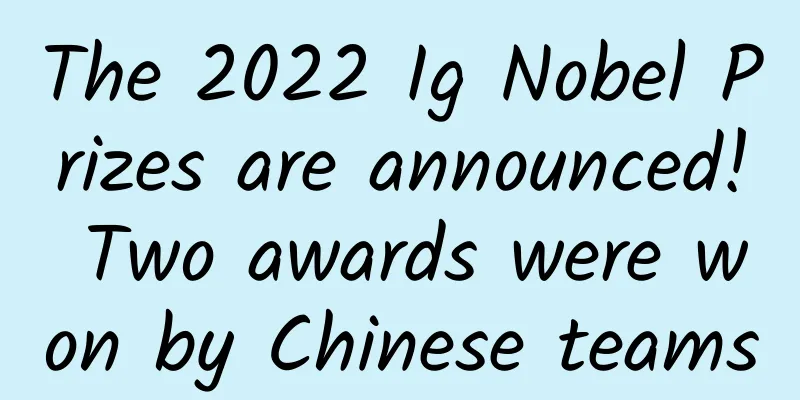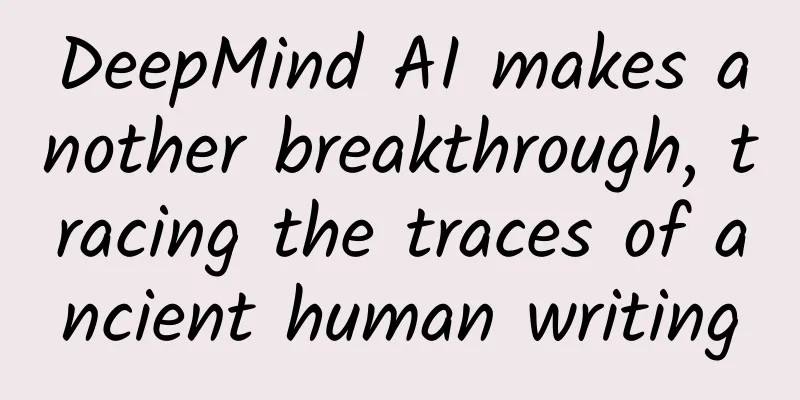Are nano products a waste of money? In fact, nanotechnology is not just "small"

|
The word “nano” sounds so technological, so putting these two words in front of a product can instantly give people a high-end feeling. Who doesn’t have one or two products named “nano” at home? The emergence of numerous nano products has made us begin to suspect that nano products themselves are a kind of IQ tax. It is undeniable that some nano products are indeed IQ taxes, such as the nano socks sold on the roadside of my home, which cost 10 yuan for 6 pairs. After wearing them for most of the day, my feet once again exuded the unique smell of adolescence 20 years ago. However, this "rejuvenation" function has nothing to do with nano technology. So, what are nano products and what is nano technology? Nano is actually a unit of length, a very, very small unit of length, much smaller than the smallest scale millimeter on a ruler. 1 nanometer is 10 to the -9th power of meters, or one billionth of a meter. This number sounds impressive, but you may not have any idea. Let's use an analogy. The earth is very big, and an egg is very small. If we put a nanoparticle on an egg, it is just like putting an egg on the earth. It is so small. Nano is very small, so small that it is shocking. However, no matter how small it is, it is just a unit of length. How can it be related to high technology? The world we live in is made up of a variety of substances. Different substances have different properties, which determines that each substance has its specific function. For example, some substances have high melting points, some have low melting points, some have good thermal conductivity, some have poor thermal conductivity, some are hard, and some are soft. These and other properties are essential properties of matter and have nothing to do with the size or shape of the matter. However, this statement only applies to the macroscopic world visible to the naked eye. In the microscopic world invisible to the naked eye, this statement does not hold water. When the scale of a substance reaches the nanoscale, the macroscopic properties of the substance may change. For example, copper has good electrical conductivity, so it is often used to make wires, but at the nanoscale, copper will no longer be conductive. There is also gold. As the saying goes, "real gold is not afraid of fire." Gold is a metal with a relatively high melting point, at 1064°C, but if it is a tiny gold particle as small as 1-2 nanometers, its melting point will become very low and it will melt at room temperature. Another example is silicon dioxide, which is insulating under macroscopic conditions, but will begin to conduct electricity once it breaks through a certain nanometer limit. There are also many non-magnetic metal oxides that will produce paramagnetism once they are smaller than 20 nanometers. There are many examples like this. Matter exhibits strange and abnormal physical, chemical, and even biological properties at the nanoscale. This phenomenon is called the "nanosize effect." Therefore, nanotechnology is not just "small", it studies a world that is completely different from what we know, and these new material properties will bring us endless possibilities. Remember the "nano weapons" and "nano armor" in science fiction movies? They can appear out of thin air and quickly cover the whole body. It seems unlikely, but there is a certain scientific basis, because some substances can indeed change over time at the nanoscale. Therefore, nanotechnology is definitely not a scam, and nano-products are not all mere gimmicks. It’s just that real nano-products don’t necessarily have the word “nano” in front of their names. For example, we now have more than 100 nano products in our hands. Yes, it is the mobile phone in your hand. You may never have thought that there are more than 100 parts in the smart phone that are derived from nanotechnology. If nanotechnology is a lie, then we may not use smart phones. Of course, there is still a lot of room for the development of nanotechnology in the future. For example, nanomedicine, nanorobots, etc. will bring different changes to our lives. For more information, please follow the official account: sunmonarch |
<<: Rainbow candy, do you still dare to eat it?
>>: For a sprained joint, should you apply heat or cold?
Recommend
This article teaches you how to use ByteDance search ads!
Starting from exploring search technology in 2016...
Information flow advertising algorithm mechanism: one formula applies to the entire industry!
Recently, classmate Xiao A reported to Qingguajun...
Honda China: Honda China sales in August 2023 were 102,000 vehicles, a sharp drop of 25% year-on-year
Recently, Honda China announced that its terminal...
From Tencent Zhihui to social advertising, how native advertising can help precision marketing
Tencent products, a high-quality performance mark...
Bilibili is going public in the United States. Let’s talk about the “three-step” strategy for advertising on Bilibili!
Most marketers who are eager for a young user bas...
5 major online marketing trends in 2017
Recently, iResearch released the "2017 China...
The heaviest rain and snow this winter is coming, with local temperatures dropping by more than 14°C! Be careful when traveling back home →
Central Meteorological Observatory Today (January...
Don’t ignore your parents’ leg pain. Many people suffer from it when they are older! Keep doing this to protect your joints
My parents are getting old, climbing the stairs W...
How to produce high-quality and massive Qianchuan live broadcast traffic-generating materials?
Quick summary of key conclusions 1. The huge amou...
Common activity forms and user attraction logic
There are often some popular event cases on the m...
The stove ignited the quilt, 13 people were trapped! How to prevent safety when heating in winter?
Evening of December 27 A fire broke out in a resi...
China Programmer's Guide: Spending more on mortgage loans, looking for a partner with the best appearance
Recently, the author discovered a "2018 Chin...
One more reason to eat spicy food! Doctors say eating spicy food has nothing to do with hemorrhoids...
Hemorrhoids, it's a bit hard to talk about Th...
Maybe you don’t know yet, the App Store has an accelerated application review channel
The review speed of the App Store has always been...









